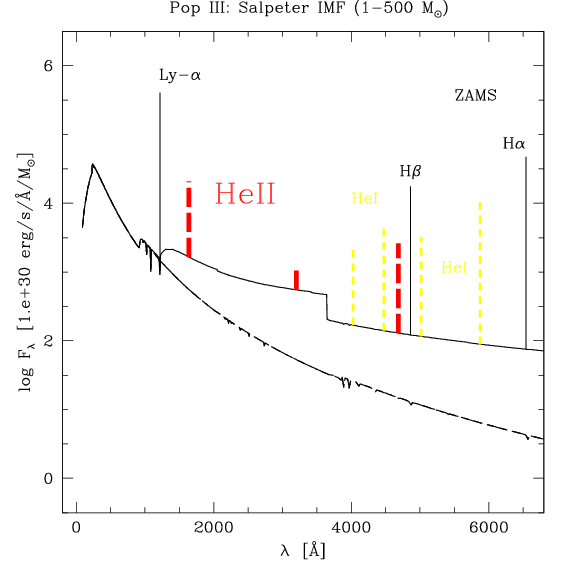The transition from Population III to normal galaxies
 |
 |
| Left: Predicted restframe EUV-optical spectrum of a young Population III galaxy with a Salpeter IMF from 1-500 Msun. Among the strong emission lines, the HeII lines (HeII 1640 Ang) stand out strongly representing a fairly unique observational signature of Pop III objects. The dashed line shows the pure stellar emission - the solid line the total emission. This shows the important/dominant contribution of nebular continuous emission to the total light! (cf. Schaerer 2002) | Right: Predicted hardness of the He+ over H ionising flux of starbursts (approximated by SFR=const) as a function of metallicity from Pop III to "normal" metallicities. See Schaerer (2003) for more details. |
Model predictions for metallicities Z=0 (Pop III), 1.e-7, 1.e-5, 0.0004, 0.001, 0.004, 0.008, 0.02 (solar), and 0.04 are available here and at the CDS.
Detailed SEDs are available on request from the author.
A full description of the Pop III models is given in Schaerer (2002, A&A 382, 82; A&A page or [astro-ph/0110697]) and in Schaerer (2003, A&A 397, 527; A&A page or [astro-ph/0210462]) for models at all metallicities.
NOTE: with respect to the calculations of Schaerer (2002) some corrections have been made e.g. to the computation of the He+ ionising flux and to the Lya equivalent width (which is now smaller). Where different, the results of Schaerer (2003) given here supersede the earlier results (Schaerer 2002).
